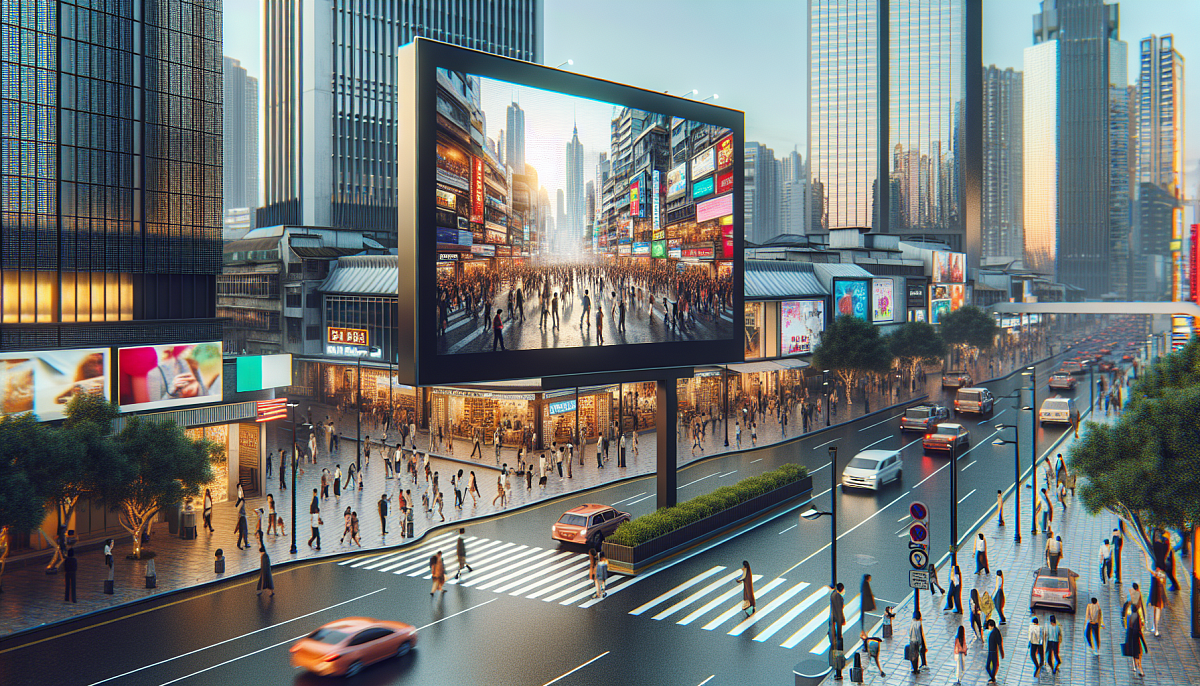
What you need to know when choosing an LED screen
What to pay attention to
Brightness
Direct sunlight can cause overexposure on the LED screen. To avoid such effects, outdoor LED panels should have a brightness of at least 5000 nits, indoors 800 nits is enough.
Color rendering
There are two main categories of LED screens: monochrome (for text and graphics) and full-color.
Resolution and optimal distance
Image quality depends on the pixel density. Higher resolution allows you to perceive the entire image. Pixel pitch and viewing distance are related. The minimum distance depends on the Px1000 formula, where P is the pixel pitch in mm. Indoors P is from 0.5 to 4 mm, outdoors from 4 to 20 mm.
Viewing angle
The viewing angle depends on the type of LED. Modern LEDs allow you to increase the viewing angle to 140°.
Power consumption and voltage
Before installation, check the parameters of the power grid. The screen power can be from 350 to 650 W depending on the model.
Mounting structure
LED panels consist of modules of standard sizes. The geometry must be perfect. Outdoor screens must withstand wind loads.
Reliability and safety
Outdoor screens have an IP65 protection class, preventing damage from dust and water. For indoor screens, IP31 is sufficient. Depending on the installation location, cooling and heating systems can be installed.
Choosing a pixel pitch for an LED screen
Determining the pixel pitch
The pixel pitch is defined as the distance between the center points of two adjacent pixels. This affects the viewing distance. The calculation of the minimum viewing distance is based on the formula Px1000, where P is the pixel pitch in mm.
For example, at a distance of 3 meters, the optimal pixel pitch is approximately 3 mm, and at 6 meters – 6 mm. An incorrect choice of pitch can distort the image or increase the cost. Too close will cause visible pixels, and too far will increase the cost of the product.
Optimal pixel pitch
For indoor screens, the recommended pitch is from 1 to 4 mm, maximum 8 mm. For outdoor structures, screens with a pitch of 2.5 to 30 mm are used.
Differences between outdoor and indoor screens
Protection and brightness
In addition to the pixel pitch, the differences lie in the degree of protection against moisture and dust, as well as in the brightness and power consumption of the LEDs.
Indoor screens have IP20 protection, while outdoor ones – from IP43 to IP65. The brightness of indoor screens varies from 500 to 1000 Nits, while outdoor screens range from 4000 to 6000 Nits. This ensures good visibility even in direct sunlight.
Quality and testing
Manufacturers often overstate the brightness in their documentation. We only work with trusted suppliers to provide our customers with quality products.
Power consumption
A brighter screen and a smaller pixel pitch increase power consumption. This should be taken into account when planning your power grid.
LED screen lifespan
Factors affecting service life
The service life of a screen depends on its components: LED modules, power supply, and design. Stable power supply and manufacturing technology also play a role.
Operating conditions
A stable power supply, SMD technology for durability, and humidity control should be ensured. Screens must operate in a temperature range of -40 to +40 °C and rest periods are recommended.






